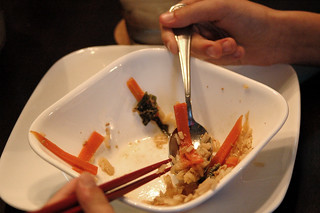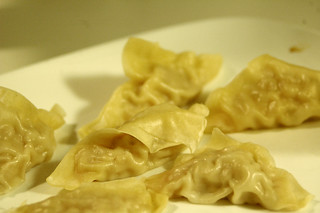Greetings and Salutations mina-san (everyone)! As the title of the blog suggests, this blog is a place to document my Japanese language studies. This blog, though, is more for my use, though, as a place to keep all my links, resources and discoveries in one, easy to find place online. Of course, I can’t exactly do more than list titles for print books I use, but as most of my resources are online, this blog will do just fine.
You may ask, what is my motivation for embarking on the process of learning the difficult but beautiful language of Japanese? Simple. Last year I became interested in the manga and anime of Japan and I have, in my exploration, discovered many a manga that has never been translated into English. I have latched onto a particular, long-running (16 years long!) manga of which less than 30% has been translated. As the manga is far more detailed than the anime, I wish to read the manga, but, due to the spotty translation, I have only been able to read the first 16 chapters. The manga? Major. It is one of those off the beaten track mangas, and it’s about…baseball! Yes, I know, I’m weird. I know it’s going to take me months if not years to read every one of the 700+ chapters, but my one salvation is this—it is shonen (action manga meant for boys) and it employs furigana! What is furigana, you may ask? It is a pronunciation guide whereby the hiragana alphabet is used alongside the kanji to indicate how one should pronounce the kanji characters. It is the equivalent of an easy reader in English. (For a more detailed discussion the various Japanese writing systems, see here.)
I began my Japanese language studies by attempting to translate chapter 17 of Major without any previous study of the writings systems or grammar involved. I believe I’m still stuck on the 3rd page. So I have changed my strategy. Yes, I will continue to attempt to translate the manga but it will be alongside a study of the writing systems (hiragana, katakana, and kanji) and grammar (especially verb tenses) of Japanese. Hopefully this will help me overcome the one main obstacle I faced during translation. That is, where in the world are you supposed to cut the characters? In other words, the lack of spaces between words is quite the hindrance. I can only imagine the trouble scholars have deciphering old English texts that have no punctuation or spaces. Japanese it kind of like that, except with punctuation (commas, periods, and loads of exclamation points) and “spaces” in the forms of line breaks. Japanese doesn’t have anything like hyphens to allow the continuation of words onto the next line…thank goodness!
So my current progress in the language…due to a full-time summer job and college taking up most of the rest of the year, I have not gotten far. I have completed two major tasks though, and that is the tasks of making flashcards for the entire hiragana and katakana alphabets, which, let me tell you, is quite a task. Hiragana is composed of 48 basic characters. Then, on top of that, you have combined characters to make sounds like kya, kyi, kyo, etc.. Then, on top of that, you have diacritical marks (dakuten and handakuten) which, when added to the basic and combined characters, change the beginning consonant sound to something else (ka to ga, etc). And that’s only the hiragana writing system. The katakana writing system has all that and then another whole list of combined characters to simulate sounds not found naturally in the Japanese language because katakana has been delegated the task of representing foreign words. In all, I made over 150 flashcards for katakana alone! Yes, that took quite a while as my flashcards are index cards cut in half with the kana on the front and the English pronunciation on the back, both handwritten by me. Now that I’ve written the flashcards, the task is now to drill myself with them to learn the kana and their pronunciation. First comes hiragana as it is the first writing system taught to children. Hiragana is the key to all the rest (and it is the system used for furigana which would mean I don’t have to have extensive knowledge of kanji to read the manga Major!). The resources I’ve been using for my studies on the hiragana and katakana alphabets (especially for how to write the kana) are two Wikipedia pages: Hiragana and Katakana. Just click on the individual kana for more information on the kana and how to write it. The charts are arranged in the order of the standard alphabet (of course, the actual Japanese version would have the writing going top to bottom instead of left to right).
If you have been paying attention to this post you’ll notice that I haven’t discussed kanji yet. That is because I haven’t started into any serious study of the approximately 2,000 kanji found on the official “common use” list. I have found one site which I’ll use to guide my studying though once I begin. The site is called “The Kanji SITE”. It lists the kanji by level (4-2 on the site, he hasn’t added 1 yet) and groups them nicely. However, I still am searching for an online resource that would guide me through the writing of kanji on a kanji by kanji basis. I have found a book in the library “Let's Learn Kanji” but it only details how to write 250 or 1/8 of the kanji on the list. And, being a book, it isn’t easily searchable.
However, first things first. I need to master hiragana before I do anything else, and right now I’m still stuck on drilling the basic hiragana kana.
And that’s all for now. Except for one small disclaimer: I am conducting a self-study of the Japanese language which will take place when, and only when, I have time. As I don’t have that much time to begin with due to working and school, don’t expect regular updates or even another extended post like this one. I will post as I progress and I progress slowly. To spice things up I will, far down the road, hopefully post my translations of Major along with a link to the raw so we can share the fun (I know I’m not the only Major fan out there).
Jamata (See you later)!
 I gathered everything for the meal, which isn't much: only half a head of cabbage, 1/2 a large carrot (or a whole small one), and 1/2 a yellow onion.
I gathered everything for the meal, which isn't much: only half a head of cabbage, 1/2 a large carrot (or a whole small one), and 1/2 a yellow onion. So once the veggies were ready, I sliced the pork chops. I ended up only using 1 1/2 because one of them was gigantic. It was shoved back into the freezer for another day. Once sliced, I tossed the meat in a large frying pan (the key word here is large because this dish will overflow the pan if you don't use one that is big enough) with a tablespoon or two of oil.
So once the veggies were ready, I sliced the pork chops. I ended up only using 1 1/2 because one of them was gigantic. It was shoved back into the freezer for another day. Once sliced, I tossed the meat in a large frying pan (the key word here is large because this dish will overflow the pan if you don't use one that is big enough) with a tablespoon or two of oil. While the pan started heating up, I pulled out two bundles (3.5 oz each dry) of soba noodles. This is only about half the noodles that the recipe calls for, but I know from cooking this before that 1) we don't need all those noodles and 2) they typically make the pan overflow. I used normal soba noodles, but yakisoba noodles are best.If you have neither, spaghetti noodles work great. But, soba noodles of some form are the best. So, I boiled the noodles until al dente and quickly drained them. You do NOT want soggy noodles. Trust me.
While the pan started heating up, I pulled out two bundles (3.5 oz each dry) of soba noodles. This is only about half the noodles that the recipe calls for, but I know from cooking this before that 1) we don't need all those noodles and 2) they typically make the pan overflow. I used normal soba noodles, but yakisoba noodles are best.If you have neither, spaghetti noodles work great. But, soba noodles of some form are the best. So, I boiled the noodles until al dente and quickly drained them. You do NOT want soggy noodles. Trust me. By the time the noodles are cooked, the pork was fairly well done so I tossed in the veggies. The recipe said to stir fry them for only around 2 minutes but I typically do it longer until I can see that the veggies are starting to soften (and that the pork is finally done).
By the time the noodles are cooked, the pork was fairly well done so I tossed in the veggies. The recipe said to stir fry them for only around 2 minutes but I typically do it longer until I can see that the veggies are starting to soften (and that the pork is finally done).







